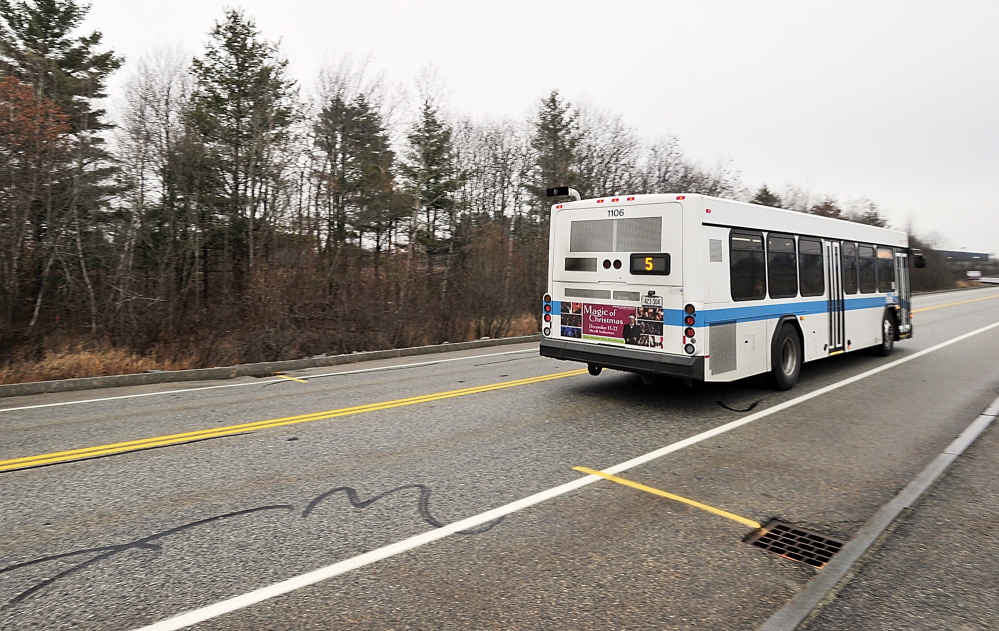In the world of travel, there are few vehicles less glamorous than a city bus.
Buses go where they want to go and they come when they want to come. Compared to the freedom of driving a car, they are the mode of last resort for anyone who has a choice.
So, a few changes to a couple of bus routes in the Portland area shouldn’t be a cause for celebration. But it is.
As Portland City Councilor and Greater Portland Metro board member Kevin Donoghue reports, two significant route changes next week will make Portland’s bus service much more usable. Now the No. 1 bus, which runs the length of Congress Street, will take passengers to and from the Portland Transportation Center, where the Downeaster train and Concord Coach Lines bus service stop.
A second change, to the No. 5 route, will make it easier for passengers to get from downtown to the Portland International Jetport. The new bus route will also stop at the new Department of Health and Human Services-Department of Labor facility, cutting what was a 40-minute bus trip in half.
A big deal? Not in itself. But it is a sign that this important transportation agency is stepping up to provide this city with the infrastructure it needs to grow.
It’s been said over and over that Portland has a housing shortage. The neighborhoods with the most rental units, like Munjoy Hill and the West End, have become hot real estate markets. New high-end developments can’t keep up with demand in those neighborhoods, putting the price of older housing stock out of reach for many low- and moderate-income residents.
The neighborhoods that are more affordable are also the farthest from grocery stores and other services, making a car essential. For older people who are giving up driving or anyone who can’t spend the $8,800 a year the AAA estimates it costs to own a car, those neighborhoods won’t work.
In many ways, Portland’s housing problem is really a transportation problem.
To make public transportation an option, planners have to do two things. The first is making sure the buses go where people want to go. The second is making sure they come often enough to make waits reasonable.
Would people give up their cars and ride a bus in Portland? Some would if they knew the service would be almost as quick as driving and they wouldn’t have the hassle and cost of parking. This is a choice that young people are increasingly making across the country, and it’s one that may look more attractive in years to come.
There is prime, developable land in downtown Portland that is currently wasted as surface parking lots. These could be the sites of buildings that employ people and generate tax revenue. The cost of developing those lots would be making parking more scarce.
Portland could cling to its parking lots and forgo the development, or it could find other ways to get people where they want to go.
Metro’s new routes are a small step in the right direction. It’s good to see the regional transit system growing as needs grow.
Send questions/comments to the editors.



Success. Please wait for the page to reload. If the page does not reload within 5 seconds, please refresh the page.
Enter your email and password to access comments.
Hi, to comment on stories you must . This profile is in addition to your subscription and website login.
Already have a commenting profile? .
Invalid username/password.
Please check your email to confirm and complete your registration.
Only subscribers are eligible to post comments. Please subscribe or login first for digital access. Here’s why.
Use the form below to reset your password. When you've submitted your account email, we will send an email with a reset code.